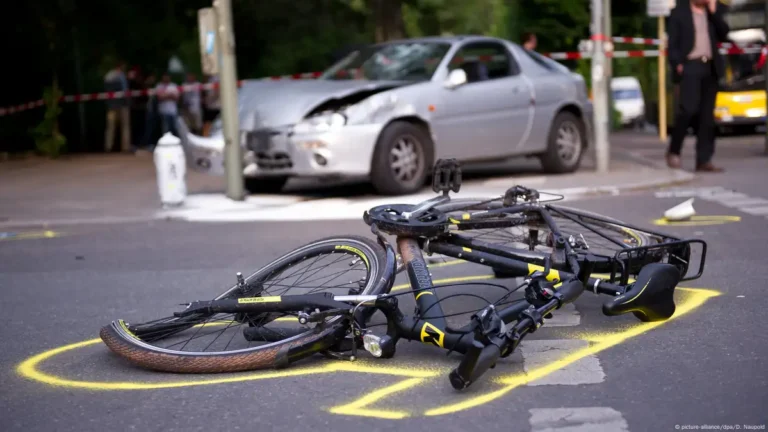A bicycle accident can be a traumatic experience, leaving you with injuries, emotional distress, and the confusion of dealing with the aftermath. Whether you’ve been involved in a collision with a vehicle, another cyclist, or any other obstacle, knowing the right steps to take after the accident is crucial to protecting your rights and ensuring you receive the compensation you deserve.
In this blog, we’ll provide expert legal tips on what you should do after a bicycle accident. From seeking medical attention to gathering evidence, these steps will help strengthen your case and guide you through the process of recovering both physically and financially.
1. Ensure Your Safety and Seek Medical Attention
Your health should always be your top priority after an accident. If you’re physically able to, move to a safe location away from traffic to avoid further harm. Then, seek medical attention immediately, even if you don’t feel seriously injured. Some injuries, such as whiplash, concussions, and internal injuries, may not present symptoms right away but can worsen over time.
-
Why it’s important: Prompt medical treatment not only ensures your well-being but also creates a documented record of your injuries. This medical documentation is crucial for proving the extent of your injuries and supporting your claim for compensation.
Tip: If you don’t feel immediate pain, still see a doctor. Insurance companies and courts may question the validity of your injuries if you delay seeking care.
2. Call the Police and File a Report
It’s essential to involve law enforcement after a bicycle accident, especially if the accident involves another vehicle, a hit-and-run, or significant property damage or injury. Calling the police allows them to assess the situation, gather witness statements, and file an official report, which can play a crucial role in your claim.
-
Why it’s important: A police report is an official, objective account of the accident, and it can help establish liability. If there is a dispute over who was at fault, the police report will provide an important piece of evidence that can help support your version of events.
Tip: Be honest and provide the police with accurate information, but avoid admitting fault. Leave fault determination to the authorities and insurance companies.
3. Gather Evidence at the Scene
Collecting evidence at the scene of the accident is essential for strengthening your case. The more evidence you have, the better your chances of proving fault and receiving a fair settlement. If you’re physically able, try to gather the following:
-
Photos of the scene: Take pictures of your bicycle, vehicle damage (if applicable), skid marks, traffic signals, street signs, and any other relevant details.
-
Witness information: Get the names and contact details of any witnesses who saw the accident take place.
-
Contact details of the other party: If another driver or cyclist is involved, exchange contact and insurance information with them.
-
Your injuries: Document visible injuries with photos, including bruises, cuts, or swelling.
-
Why it’s important: Evidence is key in proving liability and the extent of your damages. Photos and witness statements can help substantiate your claims and provide strong evidence in your favor.
Tip: If you’re unable to gather evidence yourself, ask a friend, family member, or passerby to assist you. A lawyer can help obtain additional evidence later if needed.
4. Do Not Admit Fault or Settle Quickly
After the accident, you may be tempted to apologize or assume responsibility for the incident. However, do not admit fault, even if you think the accident might have been partially your fault. In California, comparative fault laws mean that even if you are partially responsible for the accident, you can still pursue compensation, but it may be reduced based on your percentage of fault.
Additionally, avoid settling with the insurance company too quickly. Insurance companies may offer you a quick settlement, but it’s often much lower than what you may be entitled to, especially if you haven’t fully assessed the extent of your injuries and damages.
-
Why it’s important: Admitting fault could undermine your ability to claim compensation, and settling quickly might leave you without enough coverage for long-term medical expenses or future pain and suffering.
Tip: Don’t sign any settlement offers or release forms without consulting an experienced bicycle accident lawyer. An attorney can help ensure that you’re not settling for less than you deserve.
5. Consult an Experienced Bicycle Accident Lawyer
One of the most important steps you can take after a bicycle accident is to consult with an experienced bicycle accident lawyer. A lawyer specializing in bicycle accidents can help you navigate the legal process, communicate with insurance companies, and ensure that your rights are protected.
-
Why it’s important: A bicycle accident lawyer understands the intricacies of personal injury law, including how to handle insurance claims, negotiate settlements, and take your case to court if necessary. They can also help you understand the full extent of your damages, including medical bills, lost wages, pain and suffering, and future care needs.
Tip: Many bicycle accident lawyers offer free consultations, so it costs you nothing to speak with one. During the consultation, you can discuss the specifics of your case and determine whether the lawyer is a good fit for your needs.
6. Keep Track of All Expenses and Documentation
Throughout your recovery, it’s important to keep track of all expenses and documentation related to the accident. This includes medical bills, receipts for prescriptions, vehicle repairs, lost wages, and any other costs incurred due to the accident. Documenting your recovery process can help your lawyer build a strong case for compensation.
-
Why it’s important: Comprehensive records of your expenses will ensure that no costs are overlooked when calculating your compensation. It also helps provide clear evidence of the financial impact of the accident.
Tip: Organize your documentation and keep it in a safe place. Your lawyer will need this information to assess the full extent of your damages.
7. Be Patient and Follow Your Lawyer’s Advice
Carrying on with your recovery while your lawyer handles the legal aspects of your case can be a long process. Be patient and trust your lawyer’s expertise. They’ll handle negotiations with the insurance companies and pursue fair compensation for your injuries, which could take time depending on the complexity of your case.
-
Why it’s important: Legal processes can take months or even longer, especially if your case goes to trial. Staying patient and trusting your lawyer’s guidance will ensure you’re making the right decisions throughout the process.
Tip: Stay in regular contact with your lawyer, but allow them to handle the legal aspects so that you can focus on your physical recovery.
Conclusion
Being involved in a bicycle accident can be life-altering, but knowing the right steps to take afterward can make a significant difference in your recovery and your case. By seeking medical attention, gathering evidence, avoiding quick settlements, consulting with an experienced lawyer, and keeping track of your expenses, you’ll be better positioned to receive fair compensation and justice.
If you’ve been involved in a bicycle accident, contact an experienced bicycle accident lawyer to help guide you through the process and protect your rights. Let a professional take the legal burden off your shoulders while you focus on your recovery.



